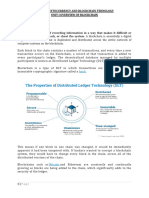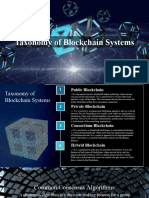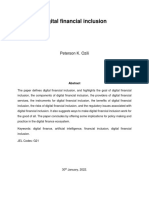0% found this document useful (0 votes)
22 views20 pagesRoom - 9
The document summarizes different types of blockchain networks and provides a deeper dive into four specific blockchain networks - Tron, Ripple, Ethereum, and Bitcoin. It discusses the key features and advantages and disadvantages of Tron and Ripple networks. The document is divided into two sections, with the first section providing an overview of public, private, hybrid, and consortium blockchains. The second section goes into more detail on Tron and Ripple networks.
Uploaded by
Bryan PhillipCopyright
© © All Rights Reserved
We take content rights seriously. If you suspect this is your content, claim it here.
Available Formats
Download as PPTX, PDF, TXT or read online on Scribd
0% found this document useful (0 votes)
22 views20 pagesRoom - 9
The document summarizes different types of blockchain networks and provides a deeper dive into four specific blockchain networks - Tron, Ripple, Ethereum, and Bitcoin. It discusses the key features and advantages and disadvantages of Tron and Ripple networks. The document is divided into two sections, with the first section providing an overview of public, private, hybrid, and consortium blockchains. The second section goes into more detail on Tron and Ripple networks.
Uploaded by
Bryan PhillipCopyright
© © All Rights Reserved
We take content rights seriously. If you suspect this is your content, claim it here.
Available Formats
Download as PPTX, PDF, TXT or read online on Scribd
/ 20























































































